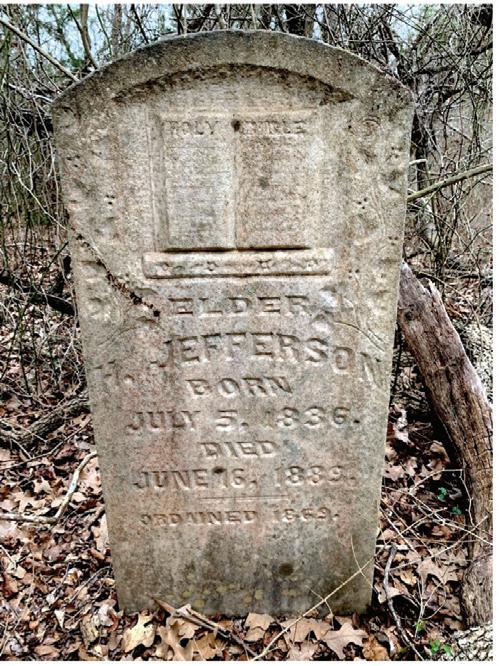






Saving Central Texas 2023-2024 provides an overview of Preservation Texas’s Most Endangered Places listings in the Central Texas region, as well as useful information about Preservation Texas and how you can work to protect cultural and historic sites where you live.
Preservation Texas is a private, 501(c)(3) nonprofit organization, founded in 1985 and headquartered in San Marcos. The organization receives no public funding and relies on membership dues, grants and donations for its work. A volunteer Board of Directors, drawn from a range of professional and community backgrounds governs the organization and provides direction to staff.
The chartered purposes of the organization are broad and intended to enable a range of preservation activities:
• To serve as an auxiliary to all agencies of the State of Texas concerned with our history, heritage, and the preservation and maintenance of significant areas, sites, buildings, monuments and artifacts;
• To acquire, by purchase, gift, devise or bequest, with or without restriction, and to preserve, restore, maintain and present to the public those areas, sites, buildings, monuments, artifacts, documents, and objects which are significant in the history, prehistory, archaeology, architecture, heritage and culture of Texas;
• To disseminate knowledge of the history, prehistory, heritage and culture of Texas;
• To engage in historical and archaeological research on the activities of past Texans; and
• To foster, encourage and develop a general appreciation and understanding of the
accomplishments of past generations of Texans in order that the lives of present and future generations may be enriched.
The organization fulfills its mission through (A) Legislative Advocacy by alerting its members to important legislation being considered by the State of Texas and providing written and oral testimony at bill hearings; (B) Local Advocacy by intervening on behalf of local stakeholders who ask for support from Preservation Texas;
(C) Educational Programs such as the biennial Preservation Day at the Capitol and regional symposia on historic preservation topics of interest; (D) Honor Awards that recognize outstanding preservation efforts to save Texas’ Most Endangered Places; and (E) Preservation Texas’s signature Most Endangered Places List program, begun in 2004; more about this program will follow (see page 8).
Preservation Texas also owns Bassett Farms Conservancy, a 2,400-acre working cattle ranch and former cotton farm located southeast of Waco in Falls and Limestone counties. The Conservancy is being developed as a preservation and conservation training center and retreat. Founded in 1871, the farm and ranch was bequeathed to Preservation Texas in 2011 by the late Mrs. Willie Ford (Bassett) Sparkman, and includes a range of historic, cultural and natural resources. Programs will focus on developing historic preservation skills, while the property is to be managed with a focus on cultural landscape preservation.
In 2022, Preservation Texas’s Board of Directors agreed to move to a regional office model for the delivery of preservation education and technical assistance programs.
Samantha Hunick is Preservation Texas’s Central Texas Program Officer. Based in San Marcos, Samantha serves as a first point of contact for

members and stakeholders within a 28-county region of Central Texas. This position has been made possible by the generous support of The Burdine Johnson Foundation (see page 20).
This section provides an overview of programs and resources that can be useful in protecting historic places.
Historic places may be officially recognized as historic by federal, state and local governments. These designations serve a range of purposes; some tied to incentives and some tied to regulations. Just because a site has not been designated does not mean that it lacks significance; more than likely, no effort has yet been made to recognize it as almost all such designations are initiated at the local level by property owners, advocates, historical societies, preservation organizations or historical commissions.
Efforts to save sites are often more successful when the buildings have federal- or statelevel designations. These designations give assurance to decision-makers, grant- funders and the general public that a site has welldocumented significance. Therefore, a plan to secure designation should be put in place for any endangered resource that is not yet designated.
The regulatory effects of designation vary. Federal designation provides no regulatory oversight of historic places; state designation provides a range of limited (Recorded Texas Historic Landmarks) to strong (State Antiquities Landmarks) oversight. Maximum oversight is typically found at the local level through the designation of local landmarks and local historic districts, although some local ordinances are weak and ineffective.
The Texas Historical Commission’s Texas Historic Sites Atlas enables you to search for specific buildings and to see all of the sites recognized at the state and federal levels. Be sure to verify the information in the Atlas by contacting the Texas Historical Commission as no database is perfect. The website is: Atlas.THC.State.tx.us
The National Register of Historic Places was created in 1966 under the National Historic Preservation Act. The process begins with submission of a comprehensive nomination form to the Texas Historical Commission. The submitted form is then reviewed by the State Board of Review before being forwarded to the National Park Service for final approval. In Texas (2023) there are 3,615 listings on the National Register, of which 1,671 are Historic Districts.
National Register properties are evaluated for the quality of their significance and must possess integrity of location, design, setting, materials, workmanship, feeling and association. They must be associated with significant events or significant people, embody a distinctive architectural type, period, method of construction, the work of a master, artistic value, or be likely to yield important information in history or prehistory. Cemeteries, birthplaces, graves, commemorative properties and relocated structures are typically not listed, but there are exceptions.
Individually listed buildings and sites that are added to the National Register are classified as being of local, statewide or national significance. Typically, but not always, these buildings must be at least fifty years old. The Texas Historical Commission can assist in determining whether an unlisted building might be eligible for listing

before a formal nomination is submitted.
Cohesive areas or neighborhoods may also be listed on the National Register as Historic Districts. A majority of the properties within a historic district must have historic significance and retain their historic character — such properties are known as contributing properties. Contributing properties are afforded the same grant opportunities and incentives as sites that are individually listed.
For a site of exceptional significance, the National Park Service will very selectively consider nominations for its designation as a National Historic Landmark, a specific category that recognizes sites of special importance to all Americans. Thus the use of the phrases “listed on the National Register” and “historic landmark” are not interchangeable. Federal programs treat National Historic Landmarks somewhat differently because of their status, including greater protection if a federal project threatens to impact the site, or access to grants such as the Save America’s Treasures grant program.
Federal designation comes with no regulatory oversight by the federal government. The National Park Service plays no direct role in the planning, management or any other decision-making related to sites listed on the National Register of Historic Places. However, sites listed on the National Register or contributing to a National Register Historic District may be eligible for the 20% rehabilitation tax credit.
The Texas Historical Commission reviews and approves nominations for buildings to be designated as Recorded Texas Historic Landmarks (RTHLs). These Landmarks must be at least fifty years of age or older and retain architectural integrity. Buildings cannot become
RTHLs if historic features are obscured by nonhistoric materials, such as vinyl siding, or if they have been relocated within the last fifty years.
Nominations are submitted through the local County Historical Commission. Sites that are designated as RTHLs are recognized with Official Texas Historical Markers. It should be noted, however, that just because a building or site has a state marker does not mean that it is an RTHL. There are over 16,000 Official Texas Historical Markers; of those only about 3,800 are RTHLs. If a building or site is an RTHL, its marker should have “Recorded Texas Historic Landmark” stamped at the bottom.
A limited amount of protection is afforded by the RTHL designation. The historic or architectural integrity of an RTHL shall not be altered without notifying the Texas Historical Commission at least 60 days in advance. Interiors are not regulated unless the changes impact the exterior or the structural integrity of the building.
State Antiquities Landmarks (SALs) are designated by the Texas Historical Commission and are protected under the Antiquities Code of Texas. Any building listed on the National Register that is located on non-federal public land (state, county, or city) is eligible for designation. Sites can be nominated by any group or individual, and are considered by the Antiquities Advisory Board before a final vote by the Texas Historical Commission.
The SAL designation is the most restrictive state-level designation available as it requires the property owner to consult with the Commission to determine if proposed alterations or demolition can occur. Archaeological sites may also be designated as SALs but do not need to be listed on the National Register.
The Historic Texas Cemeteries program began

in 1998. Cemeteries receiving this designation are protected by a record of their boundaries in county deeds and future owners of adjoining land are alerted of its existence. However, the designation provides no regulatory oversight over the property. Other state laws govern the handling of human remains and cemeteries in Texas. Historic Texas Cemetery designation is required before applying for an Official Texas Historical Marker for a cemetery.
State law enables local governments to create local historic districts. These are typically, but not always, accomplished through zoning amendments, creating provisions that govern alteration and potential demolition of local landmarks as well as new construction within locally designated historic districts. There is no standard set of regulations or guidelines in use statewide. While many local preservation ordinances are similar, each one is tailored to suit the needs and objectives of the community. Some communities are better than others in making information about local landmarks and historic districts available online; be sure to contact the local preservation or planning official for current information about landmarks, historic district boundaries, and relevant regulations.
The Secretary of the Interior’s Standards are applied to almost every decision made at the federal, state and local level relative to proposed physical changes to a historic place. These Standards were established in 1977 by the National Park Service under the authority of the United States Secretary of the Interior and provide guidelines for Preservation (maintaining a structure as found); Restoration (uncovering, protecting and recreating features that would have been present during a specific period of
significance); Rehabilitation (protecting key character-defining features while modifying other parts of the structure for contemporary uses); and Reconstruction (rebuilding a known, lost historic structure using extensive historical documentation).
Museum properties and exceptionally unique structures are typically preserved or restored; buildings that are being put to new uses or that have lost much of their historic integrity are generally rehabilitated. Historically accurate reconstructions are uncommon and usually only undertaken for museum sites or minor outbuildings on private property. The standards encourage new construction to reflect contemporary aesthetics using compatible materials, form and scale.
Information about the Standards as well as Guidelines for the Treatment of Cultural Landscapes can be found at: NPS.gov/TPS/ Standards.htm
The National Park Service has published fifty Preservation Briefs that are available online at: NPS.gov/orgs/1739/preservation-briefs.htm . These briefs cover a range of specific topics from Repointing Mortar Joints in Historic Masonry Buildings (Brief #2) to Preserving Grave Markers in Historic Cemeteries (Brief #48). These technical briefs provide excellent illustrated examples to better inform property stewards about best practices.
Financial incentives are available at the federal, state and sometimes local level for historic preservation.

Federal historic preservation incentives are managed by the National Park Service in partnership with the Texas Historical Commission. Information can be found at: NPS.gov/subjects/taxincentives/index.htm
A summary of these federal incentives follows.
Income-producing historic buildings that are certified by the National Park Service as historic structures (typically those listed on the National Register of Historic Places) are eligible for a 20% income tax credit based on the qualifying costs of the project. Eligible properties include commercial, industrial, agricultural or residential rental properties.
The charitable donation of a historic preservation easement to a qualifying organization such as Preservation Texas provides additional tax benefits. An easement permanently protects a structure and its site by prohibiting changes to the exterior (and in some cases interior) features and by restricting land uses. These restrictions are voluntary and negotiated between the landowner and the donee organization within federal guidelines. The value of the donation is determined by a professional appraiser who considers the potential reduction of the market value of the property after the imposition of these voluntary restrictions.
Rehabilitations of large historic structures often make use of a combination of the 20% tax credit and the Low-Income Housing Tax Credit (LIHTC). The LIHTC is approximately 9% of the project cost, and provides an incentive for the creation of affordable rental housing for lowincome households.
The Texas Historic Preservation Tax Credit
became effective in 2015. It provides for a tax credit of 25% of qualifying project costs for the rehabilitation of buildings listed on the National Register of Historic Places, as Recorded Texas Historic Landmarks or as State Antiquities Landmarks. Only buildings are eligible, and they must be used for income-producing or non-profit purposes.
Government-owned structures do not qualify unless they have been leased, typically to a nonprofit organization for an extended term. Nonprofit organizations, despite not paying taxes, can sell their state tax credit. For example, a $100,000 church restoration may result in a $25,000 tax credit that can be sold by the church to a Texas corporation that pays the state franchise tax or state insurance premium tax. Tax credit brokers may also purchase a credit. The dollar value of the credit is negotiated between the tax credit certificate holder and the purchaser, typically somewhat less than face value.
Many local governments have adopted tax abatement or exemption programs to encourage the rehabilitation of historic structures, typically in historic downtown commercial districts managed by Main Street programs or in historic residential districts. Details about these local programs can be found by contacting the City Manager or similar official in the city in which a building is located. If your community does not yet have a local program, consider advocating for the establishment of such a program.
Federal, state and local historic designations for at-risk historic properties open the door to potential grants for restoration or rehabilitation. Grant funds are limited and highly competitive, and only significant historic places with urgent

preservation needs are usually awarded these grants. A summary of grant programs follows.
The most significant federal grant program is the Save America’s Treasures grant program. These grants are limited to National Historic Landmarks or buildings listed on the National Register of Historic Places at the national level of significance. Grants range from $125,000 to $500,000.
More widely used are Historic Preservation Fund grants, administered through the Texas Historical Commission’s Certified Local Government (CLG) program. These grants are available for historic resource surveys, National Register nominations, local preservation plans, local ordinance development or repairs in CLG communities. Grants range from $2,000 to $30,000. CLGs must meet federal standards with respect to their local preservation regulatory system; CLGs in Central Texas are:
• Austin (Travis Co.)
• Belton (Bell Co.)
• Blanco (Blanco Co.)
• Bryan (Brazos Co.)
• Burnet County
• Caldwell County
• Comal County
• Elgin (Bastrop Co.)
• Fredericksburg (Gillespie Co.)
• Georgetown (Williamson Co.)
• Gonzales County
• Hays County
• Killeen (Bell Co.)
• Milam County
• New Braunfels (Comal Co.)
• Round Rock (Williamson Co.)
• San Marcos (Hays Co.)
• Seguin (Guadalupe Co.)
• Travis County
• Waco (McLennan Co.)
The Preserve America grant program remains authorized by Congress but in recent years has not received any federal funding. This grant program supported preservation planning activities in designated Preserve America communities. Preserve America communities in Central Texas are:
• Austin (Travis Co.)
• Bastrop (Bastrop Co.)
• Belton (Bell Co.)
• Bryan (Brazos Co.)
• Calvert (Robertson Co.)
• Fredericksburg (Gillespie Co.)
• Georgetown (Williamson Co.)
• Giddings (Lee Co.)
• Gonzales (Gonzales Co.)
• Hearne (Robertson Co.)
• Kerrville (Kerr Co.)
• Llano (Llano Co.)
• Luling (Caldwell & Guadalupe Cos.)
• Milam County
• New Braunfels (Comal Co.)
• San Marcos (Hays Co.)
• Seguin (Guadalupe Co.)
• Smithville (Bastrop Co.)
• Taylor (Williamson Co.)
• Waco (McLennan Co.)
• Wimberley (Hays Co.)
Some grant funding through the U.S. Department of Agriculture may be available for the rehabilitation of historic structures, particularly those that will be used for community economic development purposes. The National Endowment for the Arts and National Endowment for the Humanities will sometimes have grant opportunities that apply to historic structures being used for the arts or for museum purposes. Visit grants.gov for more information about federal grant opportunities.

The Texas Historical Commission’s Texas Preservation Trust Fund supports historic site acquisition, survey, restoration, preservation, planning and heritage education relating to historic architecture and archaeological sites. These are competitive grants that can provide up to $30,000 in funding.
Preservation Texas played a leading role in the establishment of the Texas Historic Courthouse Preservation program. Since 1999, 74 historic county courthouses have received full restoration grants and another 29 have received emergency or planning grants (2023). The competitive program is administered by the Texas Historical Commission. Central Texas counties that have completed courthouse restorations through this program are: Comal, Falls, Kendall, Lampasas, Lee, Llano, Milam, San Saba, and Williamson.
Some nonprofit organizations and foundations offer grant opportunities that have been utilized to save endangered places in Texas.
The National Trust for Historic Preservation (SavingPlaces.org/grants) offers grants through its Preservation Fund; additional grant programs for historic African-American places and for Sacred Places have recently been initiated.
The Texas Historical Foundation ( TexasHistoricalFoundation.org ) provides grants of up to $5,000 that have been used for restoration projects. The Summerlee Foundation based in Dallas has also provided extensive grant funding for preservation projects across Texas. Regional community foundations are also an important source of donor-directed grants that might be available for historic preservation projects.
Historic structures in railroad communities have benefited from grants by the BNSF Railway Foundation (BNSFFoundation.org ) or the Union Pacific Foundation (UP.com) depending on which rail line operates in the community.
Grants for building materials for small projects have been awarded by the Home Depot; big box building supply stores will sometimes donate materials and equipment with a letter submitted to the store manager.
Financial institutions that serve the community often have grant programs. Some may be directed by local branch managers; others require application to the bank’s national headquarters.
For many people working to save a historic place, the role of different government agencies and organizations can be confusing. Each plays an important but specific role. Understanding what these agencies and organizations can (and can’t) do will help you chart a course for action.
The National Park Service (NPS.gov) is the principal federal agency governing historic preservation programs. Most importantly, they oversee the National Register of Historic Places and the federal tax credit program.
The Advisory Council on Historic Preservation (ACHP.gov) is a small, independent federal agency that promotes historic preservation across the federal government. It advises the President and Congress on national preservation policy, with a special focus on implementation of the National Historic Preservation Act.

The National Trust for Historic Preservation (SavingPlaces.org ) is a private, non-profit organization that manages historic sites, intervenes in preservation lawsuits, manages the 11 Most Endangered List, and provides educational programming through its national conference. It is not a government agency and has no role in administering federal programs.
The national advocacy organization based in Washington, D.C. is Preservation Action (PreservationAction.org ), a 501(c)(4) nonprofit that works to develop historic preservation programs through advocacy for federal legislation in the U.S. Congress.
Another important organization is Partners for Sacred Places (SacredPlaces.org ), a nonprofit organization based in Philadelphia that supports stewardship of active congregations in older sacred places through capital campaign training and technical assistance.
The Texas Historical Commission ( THC. Texas.gov) is the state historic preservation office, based in Austin. As a state agency they administer state programs and act as a liaison for federal programs. With over 250 staff members, they provide assistance in a range of programs and also administer the state’s Main Street program.
Preservation Texas (PreservationTexas.org ) is the only statewide nonprofit historic preservation advocacy and education organization in Texas (Section 1.0).
Most Texas counties have established a County Historical Commission (CHC). These volunteer groups provide county-wide guidance to deliver educational programs, operate history
museums, and advise the Texas Historical Commission on historic marker applications, for example. Some CHCs are very active while others meet infrequently. The local CHC can be an important resource, particularly when seeking historic designations.
Local governments that have adopted preservation ordinances usually establish a historic commission, landmark commission or similarly named committee of volunteers. These commissions administer local preservation programs, including local landmark designations, approval of historic building permits, and the development of preservation plans for the community.
Local non-profit preservation organizations operate independently of the government and typically support advocacy and educational programs. Each organization is different; some administer historic sites, some do not. An example in Central Texas is Preservation Austin. City-focused organizations often provide assistance to smaller communities within their counties.
Established in 2004, Texas’s Most Endangered Places List is the signature program of Preservation Texas. Over the last eighteen years, over 170 sites and themes have been added to the list, of which less than 15 have been lost. The list is designed to provide statewide publicity for important historic places at risk of imminent loss. Sites are nominated to Preservation Texas by its members and selections are announced annually. Preservation Texas provides advocacy and technical support for these places when requested by local advocates.
A list of Central Texas sites that have been included on the Most Endangered Places List follows.

ADDRESS 218 Alexander Street, Belton
DESIGNATION NRHP
CONDITION Fair
OWNER Mount Zion United Methodist Church
RESOURCE TYPE Church
YEAR LISTED 2022
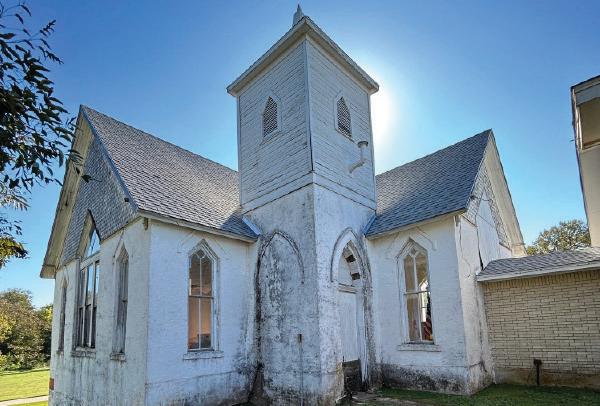
Built in 1893, this vernacular Gothic Revival Style building is the oldest surviving African-American Methodist Church in Texas. An addition was constructed on the western facade of the original church sanctuary in 1974. Advocates are working to rehabilitate the church and improve its functionality, usability and safety. In 2022, Preservation Texas announced that Mount Zion U.M.C. will receive a $75,000 grant through the Texas Rural African-American Heritage Grants Program.
ADDRESS 438 N Wall St, Belton
DESIGNATION NRHP
CONDITION Fair
OWNER Private
RESOURCE TYPE Church
YEAR LISTED 2009

Constructed in 1874, this Belton structure is the oldest standing church in Bell County. The church served as a place for refuge and solace during World War II. A stone bell tower was added in 1956. The building’s exterior has been stabilized, but the interior awaits restoration.
ADDRESS CR 267, Snook
DESIGNATION None
CONDITION Poor
OWNER Dabney Hill Missionary Baptist Church
RESOURCE TYPE Institutional
YEAR LISTED 2021

Built before 1910, this Lodge Hall is an important landmark in the Dabney Hill Freedom Colony. AfricanAmerican fraternal groups played a decisive role in shaping the political and economic life of their communities. The Dabney Hill lodge hall also sheltered visiting pastors and Black travelers who were not permitted to stay in nearby hotels. With the support of the Summerlee Foundation, Preservation Texas has worked with local advocates to develop recommendations for the site’s preservation.

ADDRESS 4554 N. US Highway 281, Marble Falls
DESIGNATION None
CONDITION Poor
OWNER Private
RESOURCE TYPE Residence
YEAR LISTED 2014

Built in the mid-19th century, this two-story limestone vernacular house is one of the most photographed houses in Texas. In the spring, fields of bluebonnets surround this important early Texas house which is suffering from the ravages of time. The historic context of this house is also being lost as the surrounding land is rapidly being developed for commercial and industrial purposes.
ST. JOHN COLONY
ADDRESS Near 1200 Chamberlin Rd, Dale
DESIGNATION None
CONDITION Fair
OWNER Various
RESOURCE TYPE Cultural Landscape
YEAR LISTED 2023

St. John Colony was established in the 1870’s by a group of fourteen freedman families. At its height in the 1910s, the community included 2,200 acres of farms, family homes, stores, a cotton gin, grist mill and a post office. A tworoom schoolhouse, built in 1906, still stands today. Also remaining are two churches, St. John Landmark and Zion Union Missionary Baptist (pictured), and St. John Colony Cemetery where hundreds of community ancestors are buried. A sharp decline in population over the last fifty years has left the community without the manpower or resources needed to maintain the collection of historic buildings and sites.
ADDRESS Luckenbach, Southeast of Fredericksburg
DESIGNATION None
CONDITION Fair
OWNER Various
RESOURCE TYPE Cultural Landscape
YEAR LISTED 2022

Settled by German farmers in the 1840s, Luckenbach boasted churches, cemeteries, a school, post office, general store, saloon, dance hall, cotton gin, and blacksmith shop. During the 20th century, the community experienced dramatic decline. In 1971, Hondo Crouch purchased nine acres in Luckenbach, including the dance hall and general store, and transformed them into a country music venue. Today, numerous events and festivals attract thousands of visitors to the area annually. Encroaching development is placing unsustainable demands on local infrastructure and will pollute nearby Grape Creek, alter existing viewsheds, and effect the authentic character of this rural community.

ADDRESS Near
DESIGNATION NRHP, RTHL (Lampasas Colored School)
CONDITION Fair - Poor
OWNER City of Lampasas, Private
RESOURCE TYPE District
YEAR LISTED 2023

Four important historic resources located near one another in east Lampasas, the 1855 Moses Hughes Mill site, as well as the 1920s New Hope Baptist Church, Lampasas Colored School, and St. Paul’s A.M.E. Church, are suffering from deterioration due to neglect. Today the City of Lampasas owns the mill site, the Colored School, and New Hope Baptist Church, and has not shown any interest in maintaining or restoring the sites. St. Paul’s A.M.E. Church recently suffered a roof collapse (pictured), leaving the building open to the weather. A grassroots preservation effort is needed to bring local stakeholders together to create a comprehensive plan for the sites to be rehabilitated, interpreted, and enjoyed by the public as a city park.
ADDRESS LCR 766, between Groesbeck and Thornton
DESIGNATION None
CONDITION Poor
OWNER Private
RESOURCE TYPE Residence
YEAR LISTED 2014
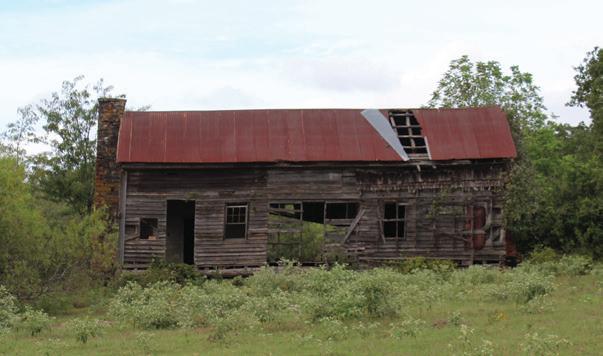
In 1834, when the Brinkley Davis family migrated to Limestone County from Indiana, they built this dog-trot structure using local timber and parts of the barge on which they had sailed down the Mississippi River. The vernacular house is perhaps the oldest house remaining in Limestone county, and has fallen into disrepair since it was last occupied in the 1960s.
ADDRESS 114 S Brooks St, Mexia
DESIGNATION None
CONDITION Poor
OWNER Cindy Walker Foundation
RESOURCE TYPE Residence
YEAR LISTED 2022

In 1954, Texas-born Country Music Hall of Fame songwriter Cindy Walker moved into this Mexia house where she wrote nationally loved songs, such as “You Don’t Know Me” and “Dream Baby”. Many music celebrities are known to have visited the home over the years where Walker lived until her passing in 2006. Though this country music landmark has been neglected for years, the recently formed Cindy Walker Foundation purchased the home in 2022 and is currently seeking funding for the property’s rehabilitation.

ADDRESS Various sites, bounded by 4th St, Westminster St, 2nd St and Main St, Tehuacana
DESIGNATION None
CONDITION Poor
OWNER Various
RESOURCE TYPE District
YEAR LISTED 2022

Tehuacana has a rich history, beginning with the native Tawakoni tribe that inhabited the area until the late 1840s. By the mid-19th century, Anglo settlement began to transform the area. In 1869, Trinity University was founded here, later moving to Waxahachie in 1902. The campus was then used by Westminster College until 1972. While many historic resources have been lost, important buildings remain from the site’s use by both Trinity University and Westminster College. Texas Hall c. 1871 (pictured) is at imminent risk of loss as a result of recent roof collapse. Other historic resources are in need of attention, including the 1930s Gymnasium.
ADDRESS 866 Park Road 35, Groesbeck
DESIGNATION RTHL, Local Historic Landmark
CONDITION Fair
OWNER Limestone County, City of Groesbeck and City of Mexia
RESOURCE TYPE Fort
YEAR LISTED 2021

In 1836, the frontier settlement known as “Fort Parker” was attacked, resulting in the death and kidnapping of numerous settlers, including Cynthia Ann Parker. Cynthia’s son, Quanah Parker, became a renowned Comanche leader. In 1936, Fort Parker was reconstructed based on plans drawn by architect Raiford Stripling in consultation with the National Park Service. In the 1960s, inferior building materials were replaced as part of a campaign to ensure that the reconstructed Fort would endure. The site is in need of archaeological research, a plan for interpretation, and greater public awareness to increase visitation.
ADDRESS
Around the 200-600 blocks of MLK Jr. Dr, San Marcos
DESIGNATION Local Historic District
CONDITION Fair
OWNER Various
RESOURCE TYPE District
YEAR LISTED 2021

After the Civil War, formerly enslaved African-Americans in San Marcos began to settle in an area near the railroad that was often flooded by Purgatory Creek. Later named the Dunbar Neighborhood, it was populated by some of San Marcos’s leading Black families and businesses. Repeated flooding, changing demographics, and redevelopment throughout the 20th century have resulted in a significant loss of historic resources.

ADDRESS Near 170 Fredericksburg St, San Marcos
DESIGNATION None
CONDITION Poor
OWNER Hays County
RESOURCE TYPE Jail
YEAR LISTED 2012

Constructed in 1885, this small wooden structure contains a jail cell which was removed from the 1873 Hays County Jail in San Marcos and donated to the city of Kyle to serve as its first city jail. Often referred to as a calaboose, small municipal jails like this one generally served as short-term lock-ups. The Kyle Calaboose remained in use until at least 1925. In 1961, the Calaboose was moved to Aquarena Springs amusement park in San Marcos where it was used as an educational tourist attraction. After the closure of Aquarena Springs in 1996, local advocates eventually moved the structure to its current location, behind the Old Hays County Jail in San Marcos, where it awaits restoration.
ADDRESS 408 Broad St, Mason
DESIGNATION RTHL
CONDITION Poor
OWNER TxDOT
RESOURCE TYPE Bridge
YEAR LISTED 2007
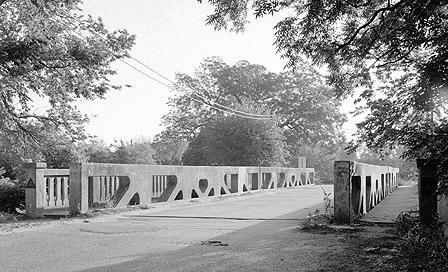
The Broad Street Bridge is the only reinforced concrete truss bridge in Texas and is one of a small number of known examples in the United States. Constructed in 1918, the bridge is composed of two 51 ft-long truss spans and supported by concrete abutments. As of 2022, the bridge has been closed to all traffic, and is slated for replacement by TxDOT.
ADDRESS 312 FM 391, Wheelock
DESIGNATION RTHL
CONDITION Poor
OWNER Private
RESOURCE TYPE Residence
YEAR LISTED 2016

The Cavitt Log Cabin, a circa 1836 structure in need of restoration, represents the threat faced by log cabins across Texas. These vernacular pioneer building types are often taken for granted, if noticed at all. They are often invisible from the main road, or located in small out-of-the-way communities with limited resources. Usually built of locally available materials, the skills needed to maintain and preserve them can be taught again.

AUSTIN STATE HOSPITAL
ADDRESS 4110 Guadalupe St, Austin
DESIGNATION NRHP, RTHL, SAL
CONDITION Fair
OWNER State of Texas
RESOURCE TYPE Institutional, Hospital
YEAR LISTED 2017

The oldest mental hospital in the state, the “Texas State Lunatic Asylum” was created by the Texas Legislature in 1856. Renamed the “Austin State Hospital” in 1925, the institution has remained dedicated to mental health programs to this day. As of 2022, five historic buildings on the property have been demolished to make way for new facilities. The main administration building (pictured) awaits full restoration.
ADDRESS 708 San Antonio St, Austin
DESIGNATION Local Historic Landmark
CONDITION Fair
OWNER Austin Woman’s Club
RESOURCE TYPE Residence, Institutional
YEAR LISTED 2010

The Austin Woman’s Club building, designed by San Antonio architect Alfred Giles, was originally built as a residence in 1874. In 1892, the home was purchased by Major Ira H. Evans and remodeled to its current French Romanesque style. The Austin Woman’s Club purchased the building in 1929, the same year the club was founded, and has occupied it ever since. Today the building suffers from deterioration and antiquated infrastructure. Efforts to maintain this Austin landmark are ongoing and preservation projects happen as funding becomes available.
ADDRESS 500 E 18th St, Austin
DESIGNATION None
CONDITION Poor
OWNER University of Texas
RESOURCE TYPE Residence
YEAR LISTED 2022

Built in 1853 by Margaret Neville Bowie, this house has been owned by several prominent Austinites over the decades. Arthur Pope Watson Jr., purchased the property in 1959 and shared the home with his partner Robert Wayne Garrett. Watson and Garrett hosted legendary parties and gatherings in the house, providing a much-needed respite for members of Austin’s LGBTQ community. The University of Texas acquired the property in the 1960s, and over the years the house has become hidden from public view by surrounding new construction. The vacant and quickly deteriorating house lies within the footprint of the future UT Austin Medical District.

ADDRESS Congress Ave between Cesar Chavez & 11th St, Austin
DESIGNATION NRHP District
CONDITION Fair
OWNER Various
RESOURCE TYPE District
YEAR LISTED 2005

Congress Avenue is one of the most important and recognizable streets in Texas. Its birth can be traced to 1839 with Edwin Waller’s plan to build Texas’s new capital city. The district is a popular tourist destination with few protected buildings or guidelines for compatible new construction. Rapid development is eroding the character, sense of scale and design of Congress Avenue.
ADDRESS I-35 to Lamar and Martin Luther King Jr. Blvd. to Lady Bird Lake, Austin
CONDITION Fair
OWNER Various
RESOURCE TYPE Various
YEAR LISTED 2010

The Central Texas economy has experienced a boom in recent years, a trend that is most obvious in downtown Austin. The city council has encouraged increased density in the downtown core as a means of reducing urban sprawl, but fails to provide protection for many historic sites. Preservationists have urged the city to articulate a vision for Austin that includes the preservation of its historic resources. The community has already lost many of the important buildings that once defined the city, and as our state’s capital continues to grow, the pressure on smallscale historic buildings will only increase.
ADDRESS 2901 Enfield Rd., Austin
DESIGNATION NRHP District
CONDITION Good
OWNER University of Texas
RESOURCE TYPE Cultural Landscape
YEAR LISTED 2017

The Lions Municipal Golf Course, aka “Muny,” was designed in 1924 and maintains its original use as a golf course today. The course was laid out on land owned by the University of Texas, and was leased to the City of Austin starting in 1936. In 1950, Muny became the first desegregated municipal golf course in the South. The lease for the land expired in 2019, and UT proposed redeveloping the site for mixed commercial and residential uses. The Muny Conservancy was created that year to raise the funds to purchase Lions Municipal Golf Course. As of 2023, the Conservancy has already raised millions of dollars toward their goal of purchasing the land and preserving the course in its entirety, keeping it affordable and accessible.

ADDRESS 1512 E Pflugerville Pkwy, Pflugerville
DESIGNATION RTHL
CONDITION Fair
OWNER Private
RESOURCE TYPE Residence YEAR LISTED 2012

William Pfluger, a German immigrant and one of the founders of the city of Pflugerville, was a rancher, banker, and cotton gin owner. The 1875 William Pfluger House served as a home to five generations of the family. Today the house is surrounded on all four sides by encroaching suburban development. Many citizens support the idea of restoring the William Pfluger House, however several attempts to raise funds for the project have failed.
Preservation Texas includes thematic listings on the Most Endangered Places list to encourage Texans to identify threatened structures in their own communities. Thematic listings relevant to Central Texas are:
• Barns
• Carpenter Gothic Churches
• Cemeteries
• Civil Rights Sites
• Dams
• Dance Halls
• Gas Stations
• Historic Assets of Downtown Austin
• Historic Resources in City Parks
• Historic Resources of the Recent Past
• Historically Segregated MexicanAmerican Public Schools
• Iron Bridges
• Log Buildings
• Mid-Century Modern Sacred Places
• Painted Advertising Signs aka “Ghost Signs”
• Railroad Depots
• Rural African-American Heritage Sites
• Rural School Buildings
• Small Town Bank Buildings
• Small Town Municipal Buildings
• Small Town Theaters and Opera Houses
• Working Class Neighborhoods
In 2018, Preservation Texas identified the six most endangered railroad depots within a 28-county area of Central Texas, which were included on that year’s MEP list. The depots are as follows:

Houston and Texas Central Railroad Passenger Depot Addition (McDade, Bastrop Co.); Southern Pacific Baggage Depot (Luling, Caldwell Co.); Missouri-Kansas-Texas Combination Depot (San Marcos, Hays Co.); Santa Fe Railway Combination Depot (Lometa, Lampasas Co., pictured); Galveston, Harrisburg and San Antonio Railroad Passenger Depot (Gonzales, Gonzales Co.); Missouri-Kansas-Texas Passenger Depot (Temple, Bell Co.)

ZEDLER’S
1170 S Laurel Ave, Luling
125 Bridge St, Marlin
2015 Most Endangered Places List
2005 Most Endangered Places List 2017 Honor Award OLD
2965 FM 2027, Tomlinson Hill
2016 Most Endangered Places List 2023 Honor Award
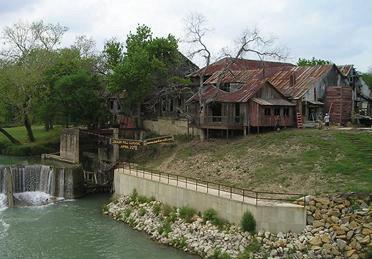





203 S Crockett St, Seguin
2012 Most Endangered Places List 2017 Honor Award


33 Herff Rd, Boerne
2010 Most Endangered Places List 2016 Honor Award



PRESERVATION TEXAS
LLANO COUNTY OLD LLANO COUNTY (RED TOP) JAIL
400 Oatman St, Llano
2010 Most Endangered Places List
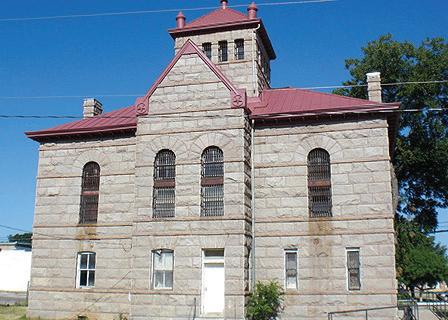

MASON COUNTY
REYNOLDS-SEAQUIST HOUSE
400 Broad Street, Mason
2014 Most Endangered Places List 2023 Honor Award


TRAVIS COUNTY
AMERICAN NATIONAL BANKSTARR BUILDING
111 W 6th St, Austin
2009 Most Endangered Places List


CAPITOL VIEW CORRIDORS
Downtown Austin
2007 Most Endangered Places List


HAMILTON POOL PRESERVE
24300
2009 Most Endangered Places List


1010 Colorado St, Austin 2009 Most Endangered Places List

500 Burkett St, Taylor 2008 Most Endangered Places List

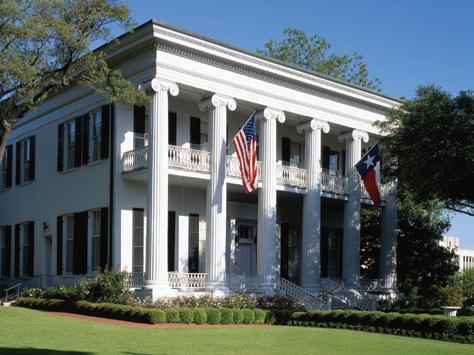

Dr. James Lee Dickey (1893-1959) was an advocate for health care and civil rights who worked tirelessly to improve the lives of African-Americans in Taylor. Dr. Dickey developed pioneering programs for infant care and was instrumental in admitting African-American patients to state tubercular clinics. In 2018, rehabilitation of Dr. Dickey’s long-neglected former home began, with the goal of creating a museum. The Dickey House was in its final phase of rehabilitation in July of 2022 when it was burned to the ground by an arsonist. The Dickey Museum & Multipurpose Center organization plans to reconstruct the house (see page 20).
Visit PreservationTexas.org/MEP to learn more about Preservation Texas’s Most Endangered Places List program, and to explore all of the sites that have been included on the list since 2004.


In 2022, Preservation Texas’s Board of Directors agreed to move to a regional office model for the delivery of preservation education and technical assistance programs. Historic preservation is intensely local and site-specific, and regional offices will enable PT to have a more direct and sustained impact across the state.
To date, Preservation Texas has established a Central Texas office based in San Marcos, and a Northeast Texas office based in Tyler. Existing offices have been made possible by the support of the Burdine Johnson Foundation (Central Texas), the Dealey Family Foundation and the Summerlee Foundation (Northeast Texas). A West Texas Office based in El Paso is expected to open in early 2024. Additional regional offices will open as funding becomes available.
Samantha Hunick was hired in September of 2022 to serve as Preservation Texas’s statewide Communications Manager and Central Texas Program Officer. Sam grew up in Marble Falls and is a graduate of Texas A&M University with a degree in Environmental Design. She received her master’s degree in Preservation Design from the Savannah College of Art and Design.
With a background in graphic design, Sam will help to develop print and online communications, manage our social media channels, and coordinate our membership programs. Importantly, Sam will serve as a first point of contact for members and stakeholders within a 28-county region of Central Texas.
Contact: hunick@preservationtexas.org
St. David’s Foundation has awarded a grant of $500,000 toward the reconstruction of Dr. James Lee Dickey’s former home in Taylor (Williamson County). Included on Preservation Texas’s Most Endangered Places List in 2008, the Dickey House was in its final phase of rehabilitation in July of 2022 when it was burned to the ground by an arsonist.
The grant has been awarded to Preservation Texas as the fiscal sponsor for the reconstruction project, and PT staff has assisted with the selection of an architect, Fred Robinson, and the development of plans for the project.
The reconstructed house will honor the legacy of Dr. James Lee Dickey by serving as a community wellness center, designed to provide Taylor residents with equitable access to medical care and social services. The reconstruction project is expected to be completed by the end of 2024.
Visit PreservationTexas.org/DickeyHouse to learn more and contribute.



Bassett Farms Conservancy is the property of Preservation Texas, a gift of the late Willie Ford (Bassett) Sparkman. The historic 2,400-acre farm and ranch, located southeast of Waco, includes a range of historic, cultural, natural and archaeological resources.
In 2022, major progress was made on the exterior restoration of the 1875 Bassett House and completed restoration of two late 19th century outbuildings. We have also completed a comprehensive cultural landscape report for the core acreage of Bassett Farms Conservancy, which will guide the ongoing rehabilitation of the property as a statewide preservation training center.
The Bassett Farms Conservancy property includes Hopewell Freedom Colony, established in 1875. In 2024, a full documentation and conditions assessment project will be completed, funded by The Summerlee Foundation and the National Trust for Historic Preservation.
In 2024, a former Kosse City Hall, built circa 1915, will be transformed into the Kosse Education Center. The Center will be the starting point for those who visit Bassett Farms, and will include exhibits and meeting spaces that will serve the educational program needs for the Conservancy. Visit BassettFarms.org to learn more and contribute.
